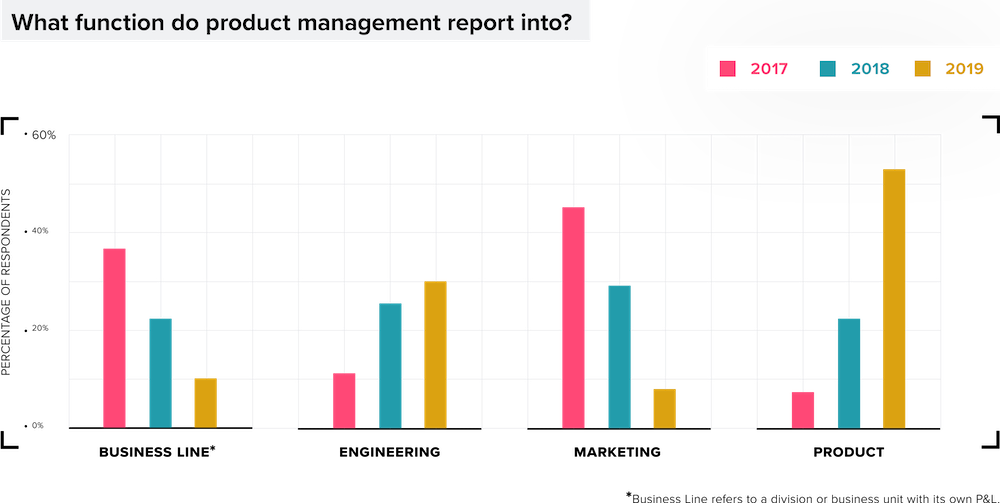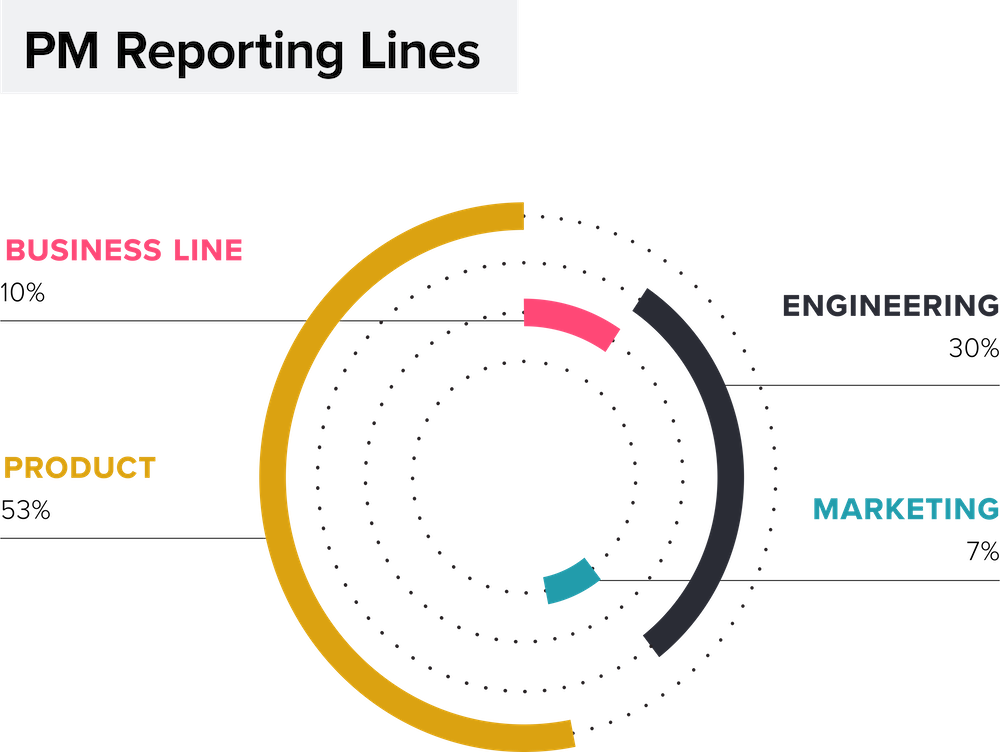Each year, Pendo and Product Collective publish The State of Product Leadership (SOPL) as a way to understand what’s on the minds of today’s product managers. Bigger and better than ever before, I’m excited to announce SOPL 2020, a primary research study of 600 product managers and executives from US, Canada, UK, France and Germany.
As is our tradition, we’ve published a free e-book that summarizes the 10 key findings from this year’s study along with recommendations you can put to practice. Join us for a public webinar on February 11th where we’ll discuss each of these findings in depth.
The findings this year range from how PMs are oriented (more tactical than visionary), how they make decisions (in response to explicit customer requests more than by following a vision for what they believe customers need), how they measure success (product and feature adoption and usage), and where they struggle the most (roadmapping and onboarding).
CPOs are on the rise
It also includes findings on reporting lines, which often yields the richest discussion and debate over the course of the year. Over the last few years, we’ve seen evidence of a shift happening here, from marketing as the most common reporting line for product managers toward a standalone product function rolling up to a chief product officer or equivalent. This year, over half of respondents told us that this is how they report, suggesting that CPOs are very much on the rise.

Of course, for some of you, this isn’t a huge surprise–maybe you’ve always known product teams rolling up to a CPO. But, until recently, this was a key marker of maturity and much more prevalent in progressive Silicon Valley SaaS companies.
If you’re of a certain age, you’ve noticed certain moments that set the passage of time in bold relief. Maybe it’s a conversation with someone a decade or two younger who stares and blinks when you drop what is, for you, an obvious and perfectly timely reference. For me, it’s political references from the 80s and 90s (it turns out that calling a sensible high-and-tight military cut the “Ollie North” doesn’t really register with anyone born after the Carter Administration).
The same is true with this finding. When we launched our first iteration of the SOPL study in 2018 we found that, by a wide margin, product teams reported into CMOs. I recall our CPO accusing me of stacking the deck, as CMO, to soften the ground for an incipient land grab within our company. He was joking, I think.
I also recall a lot of people turning up their nose at this finding. How could marketing ever manage the PM function? For me, it’s as obvious and familiar as Ollie North’s haircut. That’s the way it’s always been. Heck, earlier in my career, I often insisted that product report into me.
How dated that now feels. Check out where marketing falls in the ranking this year: from first to worst, coming in dead last in reporting prevalence.

A zero sum game?
In fact, as evidence that I am not, in fact, mounting a campaign to overtake the product organization, I recently said the following in an Inc. article predicting the top trends for 2020:
In 2019, we saw notable consumer brands like J&J, Uber, Lyft, Taco Bell and Hyatt ditch the CMO, following a multi-year trend of replacing the role with one reflecting a more focused mandate for growth or customer experience. In 2020, we’ll see the early signs of a similar trend in B2B as a few product-led companies swap the CMO with a chief product officer. As buying journeys become increasingly led by a self-service trial and freemium experience, some B2B companies will find that hacking growth and nailing the product experience supersedes a more traditional marketing mix. More often than not, we’ll see both roles working in tandem, but many CPOs will rise to stature and influence beyond their marketing peers.
No, I don’t see the CMO role disappearing anytime soon inside B2B companies, and that’s not self preservation speaking. Creating an engaging brand and inbound demand is still utterly crucial to how companies win. But nothing is more crucial than getting the product right. As I’m inclined to say to anyone who will listen, companies can no longer hide behind a false brand promise. The product itself needs to be everything that’s promised and more. It also needs to be one of the first moments of truth because so many customers want to try before they buy. All of this points to the primacy of product and the inevitable rise of the CPO as a power player.
I hope you’ll join us on February 11th for more discussion on this and other findings.